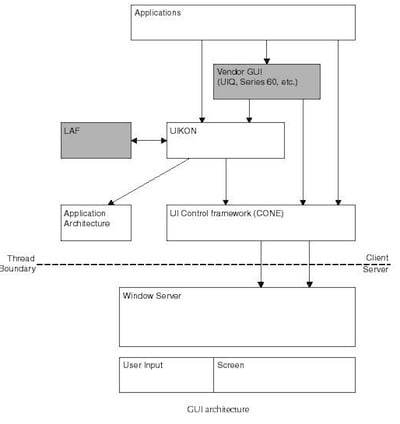This article is more than 1 year old
Why Symbian failed: developers, developers, developers
Fear and loathing in active objects!
Darren Starr, who ported a well-known application to Symbian many years ago, tells us:
p>As a former professional Symbian developer who has worked on Windows, Mac (Classic and OS X), QNX, Linux, and numerous other platforms over the past 20 years, I can say Symbian was the greatest disaster of a platform design I have ever encountered in an OS that had more than 1000 users. I worked directly with Symbian on several projects and have had plenty of experience of "The Symbian way is better because... well it's Symbian".
I recall putting an obscene amount of work into just trying to make my applications play well with the system since the system was utterly incapable of letting two applications run at once without negotiating with each other as to who should take over. Symbian was more an application that could load other applications into itself than an operating system.
For explanation we turned to a former Symbian insider, close to design decisions being made. The insider told us that Darren's experience was based on first impressions of the original Epoc:
This guy is basing his opinion on the original EKA1 kernel. It was completely rewritten from the ground up in 2002 and 2003.
The redesign also took care of the “co-operative” style multitasking: threads were added in the EKA2 kernel in 2003, exceptions were supported in Symbian 9.1 on, from early 2005.
Ahem. Roger Nolan, who worked on messaging and the kernel for Symbian, points out:
The first generation Epoc kernel, EKA-1, supported full multitasking from the start. Threads and active objects were supported too. Active objects were an optional was of getting concurrency without the overhead of spinning off a thread. Like all Symbian APIs at the time they were designed with that in mind - programmer ease of use came second.
Active Objects have since appeared on iPhone as
NSOperationIt's just basic goodness.
There were, admittedly, idiosyncrasies. These root back to Symbian’s heritage, the former insider explains:
The SymbianOS memory architecture was weird because it ran on ARM processors, which at that time were a little funky in how they implemented their caches - they were virtually indexed, and virtually tagged - so every time the process switched, you had to invalidate half your cache, and this of course meant a flurry of writeback traffic, resulting in poor power consumption.
Yet the Symbian memory management scheme was the reason you could get a few days of usage out of the phone, whereas running Linux it'd only last eight hours.
Symbian would eventually run successfully on five different platforms.
Not all of the criticism can be laid at Symbian’s door. Take this common complaint (from several correspondents) here articulated by Darren:
The greatest reason that the Eikon, Akon, Uikon (and remember Series 60, Series 80 and Series 90 all had entirely new ones) frameworks all ended up so completely unable to inter-operate or even ever be merged is that they all built entire new controls and GUIs on top of the base system in a way that was meant for skinning. They literally turned the concept of inheritance upside down. Instead of inheriting the base classes, the base classes were modified to inherit them instead. This meant that instead of all the UIs sharing a common root, they used the common root as a compatibility layer.

Symbian's confusing graphics architecture
Here we see indecision and politics – and Nokia’s increasing reliance and market power. Symbian itself could never decide whether it was in the UI business or not. It eventually kept one and maintained it – UIQ - and Sony Ericsson and Motorola had both bet product ranges on this UI. But this was an early casualty of the open sourcing move/Foundation – they’d shut it down by the end of 2008. Going further back, I do recall getting wind of various “unity” efforts in the early noughties, so there was one API for developers. These never happened while Nokia ploughed on with the buggy and poorly written S60. Then Python and Posix APIs were hailed as the easy RAD-like environment Symbian needed. Hmmm …
Symbian finally has one simple, easy-to-use API now, with Qt... which is still not quite complete. But it took Nokia’s purchase of Trolltech and a long digestion (during which the Trolltech founders and CTO left) and everyone else dropping out – before Symbian. Says our former insider:
I know there are a lot of things wrong with Symbian OS. But there are also a lot of things right with it: the kernel is a beautiful design, and it has power management far, far better than any other general purpose OS that exists anywhere. The security manager is sweet, and the way it is interceptable, introspectable, and generally hackable (in a good way) is extremely cool.
So... weird and eccentric Symbian undoubtedly is. But the responsibility for the poor stewardship of its Symbian asset must ultimately rest with Nokia.
I just wish Nokia had assigned engineers that understood it, is all. They ruined it from day one. On the one hand, complaining of slow boots, while on the other hand, loading 17 megabytes of bitmaps in their startup thread. Or reading JPEGs one pixel at a time. ®
